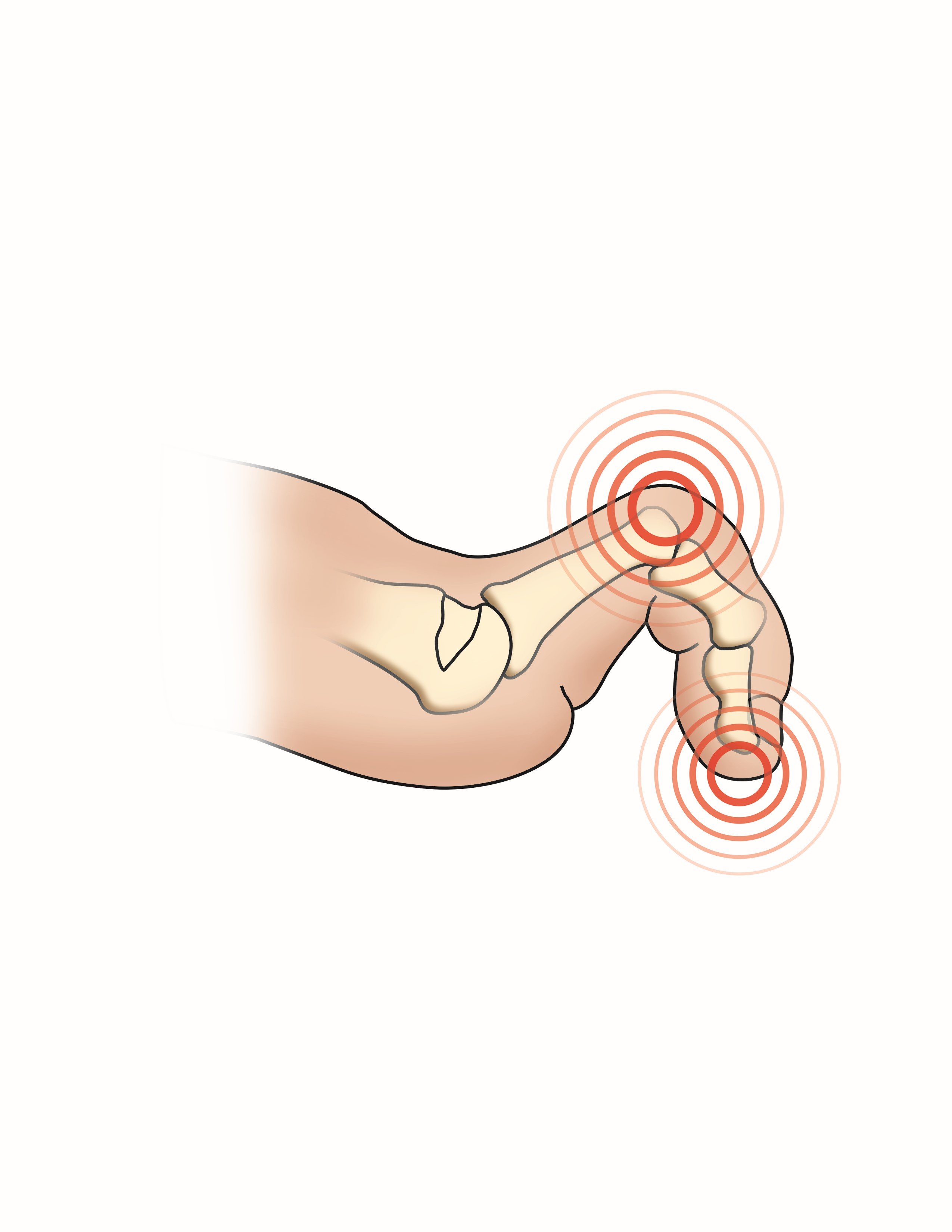Hammer Toe Treatment, Symptoms, Causes and Prevention
Hammer toe deformity is common with people of all ages. It is characterized by the toe bending upward at the middle joint with the end of the toe becoming angled downward causing the toe to no longer lay flat.
Two Types of Hammer Toe
Flexible Hammer Toe: If the toe still can be moved at the joint, it's a flexible hammer toe. Since this is a milder form of the problem there may be several treatment options such as using pads, cushions, or manual techniques.
Rigid Hammer Toe: If the tendons in the toe become rigid, they press the joint out of alignment. At this stage, the toe cannot be moved. It usually means that surgery is needed.
Since rigid hammer toe is stiffened and unresponsive to normal techniques. This type of condition is much more difficult to correct.

Hammer Toe Symptoms
Is hammer toe painful? It can be. Moving the affected toe can be difficult or painful.
Do you think that you are suffering from hammer toe? Read on to see if you have any other symptoms:
- Putting on a shoe may hurt the top of the bent toe
- Corns and calluses can form on the top of the toe joint
- Hammer toe swelling can occur and takes on an angry red color
- Inability to flex your foot or wiggle your toes
- The ball of the foot under the bent toe hurts
- Difficulty walking
What is the Difference between Claw Toe vs Hammer Toe vs. Mallet Toe?
There are 3 common bent toe deformities and each one affects the toe joints differently creating that abnormal bend.
What is claw toe?: Claw toes are bent into an abnormal claw-like shape. The condition usually happens to the four smaller toes of the foot and it’s the middle and end joints (the joints furthest away from your ankle) that buckle.
What is hammer toe?Toes which curve at the middle joint, forcing the toe down.
What is mallet toe?Similar to hammer toe but the toes bend at the joint closest to the tip.
Hammer Toe Causes
The condition is usually caused by an imbalance in the muscles, tendons and ligaments that align the toe normally and hold it in place.
The most common cause of hammer toe:
Poorly fitting footwear such as tightly fitting shoes, narrow or pointed toe boxes that cause your toes to squeeze together, and high heels can put severe pressure on the toes and their joints.
Other causes of hammer toe include:
- Heredity
- Injury
- Diabetes
- Arthritis
- Age (the risks increases as you grow older)
Hammer Toe Prevention
- Use PediFix® orthotic devices that help align the foot and can provide a cushioned layer for the affected toe, usually offering significant relief. This is especially true for severely bent under toes. (link to orthotic device on the PediFix website)
- Wear better fitting shoes that are high and broad across the toes, called a wide toe-box shoe. It will allow your toes more room and often alleviate pressure, usually relieving some of the pain.
- Start an exercise routine from your doctor or podiatrist. If hammer toe is caught early, these exercises have proven to be an effective way of reducing the chances of it progressing further, helping to return flexibility in the toes. Non-Invasive Hammer Toe Treatments
- Apply a PediFix® Hammer Toe product from the selection below. Many of these products can help reduce pain, provide relief on toe tips, prevent corns, calluses, blisters and may help you walk better.
Non-Invasive Hammer Toe Treatments
Apply a PediFix® Hammer Toe product from the selection below. Many of these products can help reduce pain, provide relief on toe tips, prevent corns, calluses, blisters and may help you walk better.
Recommended PediFix® Hammer Toe Solutions:
- Hammer Toe Crests (#8154)
- FELTastic® Hammer Toe Cushion (#P54)
- Visco-GEL® Hammer Toe Cushion (#P53)
- ToeSnug® Adjustable Hammer Toe Wrap™ (#P8163)
- Visco-GEL® 3-Loop Hammer Toe Cushion (#P1036)
- Visco-GEL® Adjust-A-Loop™ Hammer Toe Crests (#3037)
- Forefoot Compression Sleeve™ (#6027)
- Pedi-Smart® Toe Trainers® (#P51)
- Visco-GEL® 5-ToeBuddy® (#P1114)
- "4 in 1" Super Soft Toe Cushions™ (#P83)
- Podiatrists' Choice® Double Toe Straightener (#P57)
- Podiatrists' Choice® Toe Straightener (#P55)
- Podiatrists' Choice® Triple Toe Straightener (#P58)
- Visco-GEL Sport Toe Cap (#P78)
- Visco-GEL® ToeCoach™ (#P2853)
- Visco-GEL® Toe Cap (#P80)
- Visco-GEL® Customizables® Hammer ToeCrutch® (#1037-CTZ)
- Visco-GEL® Toe Protector (#P82)
- Visco-GEL® Hammer ToeCrutch® (#P1037)
Other Hammer Toe Treatment Options
If your symptoms persist despite your best efforts to find relief, contact your doctor immediately. In these special cases, surgery may be considered as an alternative.
Complications that can arise from corns include bursitis and the development of an ulcer.





